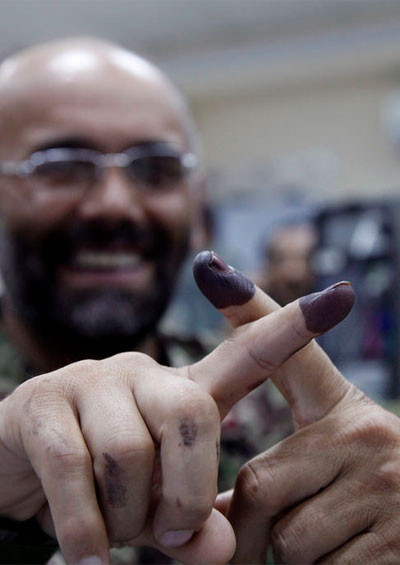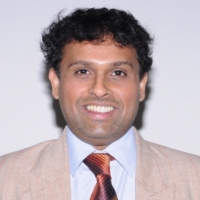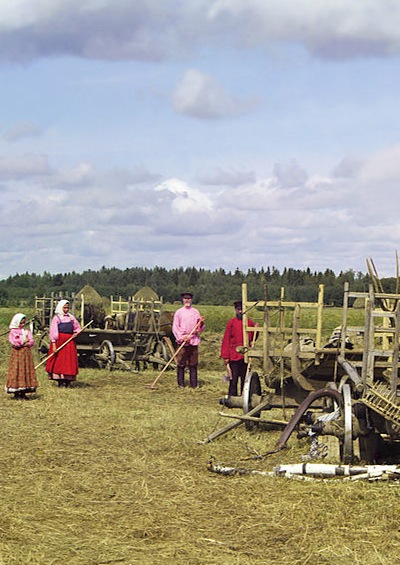A Vote for Afghanistan
How can a society develop exemplary civic courage in the face of brutal terror?
April 10, 2014

How can a society pulverized by violence develop exemplary civic courage in the face of brutal terror? Afghans defied the Taliban’s ban on voting or competing in elections because they know deep within that there is no alternative path to nation-building except through the democratic transfer of power.
In a land fabled for traditional mores and where modernity is light years away from touching the average Afghan’s way of life, the idea of democracy has become the only decent option for the people.
Leading the winds of change in Afghan society were two hitherto marginalized elements of the population — women and the young. For a demographically youthful nation such as Afghanistan, where 75% of the population is below the age of 25, profound shifts in attitudes towards politics within a short and rapid time frame are not inconceivable.
Detailed statistics about the percentage of first-time voters that turned out for Afghanistan’s April 5, 2014 presidential election are not available. But there is little doubt that young voters were at the vanguard of the new positive thinking about elections as a means for improving their lot.
I spoke with Afghan university students just after the polls closed and heard common refrains that the youth “are more serious about politics” and that they are “less in awe of traditional authorities” — clerics, warlords and tribal chieftains.
Long decades of warfare had already shattered Afghanistan’s age-old social leadership structures, which sustained orthodox thought and action.
Seeds of regeneration
Through the crucible of destruction comes the seed of regeneration. Today, young Afghans of different classes and ethnic backgrounds are more open to learning from the rest of the world and reformulating the boundaries of what is possible.
Western opinion-makers claim that contemporary Afghan youth are from “Generation America.” However, the influences of successful democracies like India, which is much beloved among Afghan people of various hues, and Turkey, where Islam and democracy have managed to co-exist, are also quite strong in the Afghan psyche.
Increasing access to the Internet and the shared experiences of the Afghan diaspora from around the world are other sources of inspiration for a shift in the political culture.
Although Western donors, aid agencies and militaries are desperately looking for bragging rights after a decade of spending blood and treasure to stabilize Afghanistan, most Afghan youth are conflicted in their minds about the American and European roles in their country.
Young Afghans do not believe that the Americans and Europeans who have underwritten the transition from Taliban rule to democracy over the last decade are blameless angels or Good Samaritans without vested interests.
At the same time, any notion of youth power for democratizing Afghanistan cannot be exaggerated at the present juncture of political evolution where accountable government is still an aspiration.
Youth movement
In a war-scarred nation that has lost so many generations to untimely death, senior civil servants are just in their early 30s. News media outlets are run by people barely in their 20s.
But none of the top contenders for winning the race for the presidency is below the age of 50. The entrenched power configurations and patron-client relationships around which Afghan politics have revolved in the last decade also ensured the presence of prominent warlords as presidential candidates (or as vice presidential running mates).
Nevertheless, the social base that is rising up and taking the plunge into active citizenship is so youthful that the disconnect between political elites and the people will widen. At some point, a tipping point will come and bring younger and more visionary leadership to the fore.
The women of Afghanistan have also witnessed a great surge in participation in the electoral process. The mere fact that one of the main contenders for the presidency, Zalmay Rassoul, fielded a female running mate, Habiba Sarabi, has energized women at the grassroots.
Much to the chagrin of the misogynistic Taliban, a record 300 female candidates contested the provincial council elections that occurred simultaneously with the presidential polls.
Post-Karzai problems
One cannot wish away the vast panoply of problems of kleptocratic corruption (Afghanistan ranks at the bottom of the Transparency International Corruption Perception Index), crushing unemployment and poverty (Afghanistan’s Human Development Index ranking is 175th out of 186 countries), and a war that is unlikely to end as long as Western militaries stay put.
Moreover, the constant destabilizing challenge from a predatory neighbor, Pakistan, which prefers a fragmented Afghanistan, is also not going to be magically thwarted by any post-Karzai regime.
But the Afghan people have sounded a notice that they want a regime to deliver both governance and security. And if Karzai’s successor fails as he did, the participatory potential sparked by this election will create the basis for new politics without recourse to the gun.
Editor’s note: This article is adapted from a version that originally appeared in India’s English-language newspapers Asian Age and the Deccan Chronicle.
Takeaways
In Afghanistan, 75% of the population is below age 25. Profound shifts in political attitudes can happen quickly.
Decades of war shattered Afghanistan's age-old leadership structures that sustained orthodox thought and action.
Today, young Afghans of different backgrounds are open to learning from the world and re-imagining what is possible.
Growing access to the Internet and experiences of the Afghan diaspora may inspire a shift in the political culture.
In Afghanistan, senior civil servants are in their early 30s. News outlets are run by people barely in their 20s.
Much to the chagrin of the Taliban, a record 300 female candidates contested provincial council elections.

